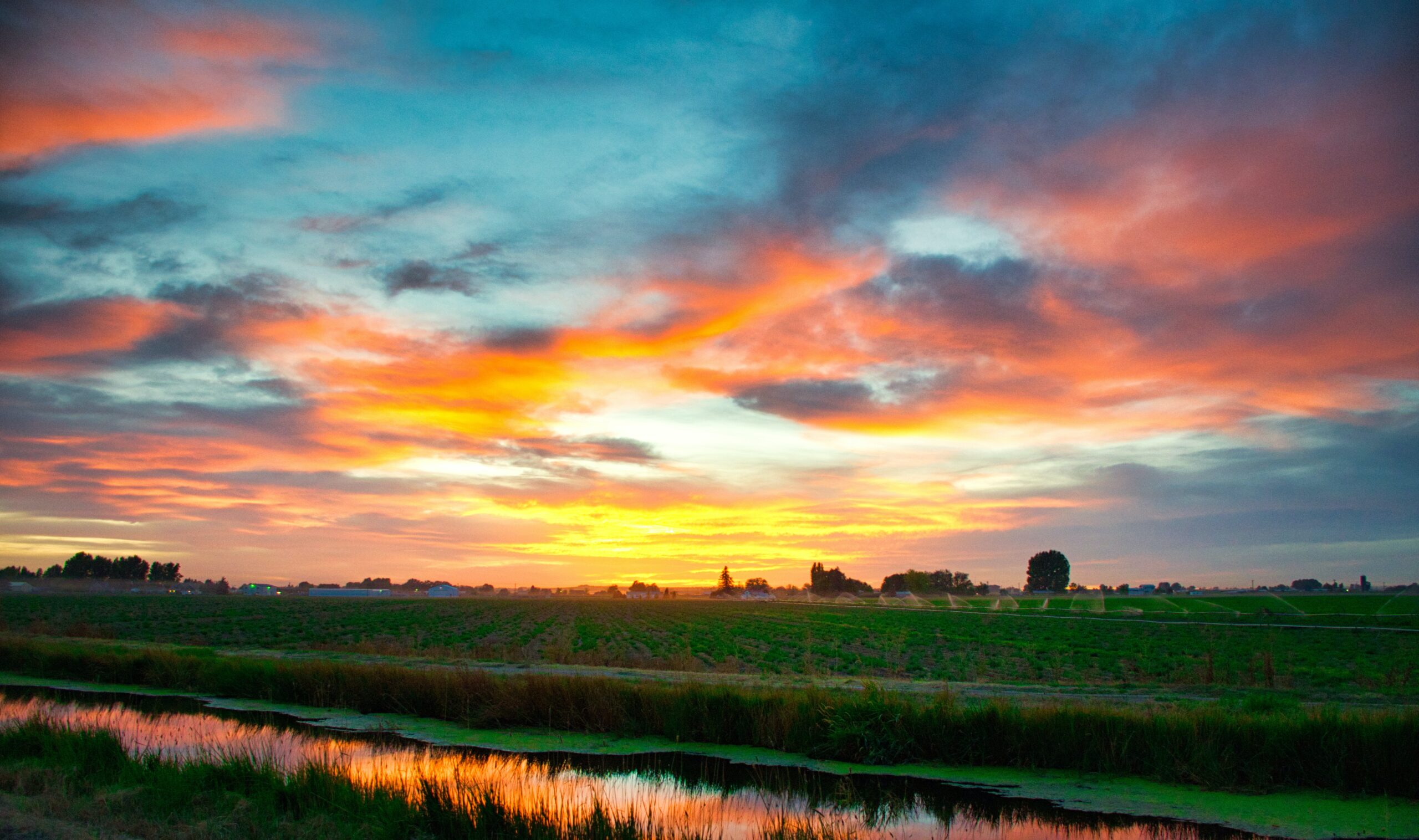On May 25, 2023, the Supreme Court of the United States released a decision addressing whether the Army Corps and Environmental Protection Agency’s Clean Water Act authority to regulate navigable waters that are “waters of the United States” (WOTUS) extends to certain wetlands based on their adjacency to WOTUS. The Court’s decision focused on whether the federal government’s jurisdiction under the Act extended to wetlands and streams that are isolated, ephemeral, or not obviously connected to a navigable water – a question the agencies and regulated community have struggled with since the last time the Court considered this question over 17 years ago in the joint cases of United State v. Rapanos and Carabell v. United States.
The case in the Court’s recent decision concerns a family, the Sacketts, who purchased a residential lot near Priest Lake, Idaho. After purchasing the property in 2004, the Sacketts began placing sand and gravel on the lot in preparation to build a home. However, the EPA claimed the lot contained wetlands that qualify as “navigable waters” regulated by the Act and ordered the removal of the sand and gravel. The EPA ordered the Sacketts to restore the site, threatening penalties of over $40,000 per day until the demands of the EPA’s restoration order were completed.
The Clean Water Act requires a permit from the U.S. Army Corps of Engineers for any work that results in “the discharge of fill materials into navigable waters.” The term “navigable waters” is defined as “waters of the United States” or “WOTUS”. WOTUS includes traditionally navigable waterways, like rivers, streams, and lakes, tributaries to those navigable waterways, and wetlands “adjacent” to those waterways and tributaries.
Sackett’s property was separated from Priest Lake by a strip of developed lakefront homes and a bermed roadway. Regardless, the EPA classified the Sackett wetlands as navigable WOTUS because the wetlands were near a ditch that outletted into a creek, which flowed into Priest Lake, a navigable lake located wholly within the state of Idaho. The Ninth Circuit Court of Appeals affirmed summary judgment in favor of the EPA’s claim of jurisdiction. Sacketts appealed to the U.S. Supreme Court, challenging the test used by the Ninth Circuit to determine whether the wetlands on their property are navigable WOTUS within the scope of the Clean Water Act. To resolve the dispute over the Act’s protection of the wetlands in the Sackett case, the Supreme Court needed to establish a test for determining whether the wetlands were “adjacent” to Priest Lake.
Prior to Sackett, three Supreme Court cases considered the Clean Water Act’s reach over non-navigable wetlands. The first, U.S. v. Riverside Bayview Homes, Inc., held that the Act prohibits discharges of fill material in certain wetlands adjacent to navigable waters, even though the wetlands themselves are not navigable. The second, Solid Waste Agency of Northern Cook County v. U.S. Army Corps of Engineers, determined the Clean Water Act does not cover all wetlands, just those that are somewhat permanent and not isolated from other navigable waters. Finally, like Sackett, Rapanos v. U.S., focused on what it means for a wetland to be “adjacent to” a tributary or navigable waterway. The Court was not able to answer that question in 2006 conclusively because no single test gained support from a majority of Supreme Court justices.
Two jurisdictional tests for adjacent wetlands came from the Rapanos decision. The first test, the continuous surface connection test, concluded that a permit would only be required for discharging pollutants into wetlands with a “continuous surface water connection” to a regulated waterway that makes it “difficult to determine where the waterway ends and the wetland begins.” The second test, the significant nexus test, stated that wetlands are “adjacent to” traditionally navigable water if those wetlands have a “significant nexus,” meaning the wetland has a significant effect on the chemical, physical, and biological integrity of regulated waterways.
Since 2006, the Ninth Circuit, like many others, held that the EPA has jurisdiction under the Clean Water Act over wetlands that satisfy either the continuous surface connection or the significant nexus test. The Sackett’s petition for Supreme Court review challenged whether the significant nexus test relied upon by the EPA violated the plain meaning of terms within the Clean Water Act.
The majority opinion in Sackett, written by Justice Samuel Alito and joined by Justices John Roberts, Clarence Thomas, Neil Gorsuch, and Amy Coney Barrett, rejected the significant nexus test and adopted the continuous surface connection test from Rapanos. The Court determined the EPA did not have jurisdiction over the Sacketts’ property because the property does not have a continuous surface water connection with Priest Lake. The Court concluded that wetlands must qualify as “waters of the United States” in their own right. In other words, those wetlands must be indistinguishably part of a body of water that itself constitutes “waters” under the Clean Water Act.” In order for the EPA to assert jurisdiction over adjacent wetlands, the Court ruled that the EPA must first establish that the adjacent body of water constitutes a “waters of the United States” – one that is a relatively permanent body of water connected to traditional interstate navigable waters. Second, the EPA must establish that the wetland has a continuous surface water connection with adjacent body of water, such that it is difficult to determine where the water ends and where the wetland begins.
The Court expressed concern during oral arguments and in its written decision over the uncertainty that the significant nexus test provided landowners and the regulated community. The Court stated that the significant nexus test puts many property owners in a precarious position because it is often difficult to determine whether a particular piece of property contains waters of the United States, and the serious criminal and financial penalties imposed for a violation of the Clean Water Act demands Congress be exceedingly clear in stating what conduct is prohibited.
After the Supreme Court held oral argument for Sackett, but before releasing its decision, the EPA released a new rule that, among other things, defined “adjacent waters.” The rule stated the Clean Water Act would be applied to a wetland that either has a continuous surface connection or a “significant nexus” to a navigable waterway. The rule stated that the Act applied to wetlands under this rule if the wetlands alone, or in combination with other similarly situated waters in the region, significantly affect the chemical, physical, or biological integrity of a navigable waterway.
In response to the Sackett decision, the EPA and Army Corps have announced its intent to amend its “Revised Definition of ‘Waters of the United States’” rule in a way that limits the definition of adjacent waters to those waters that have a continuous surface connection to traditionally navigable waterways. The agencies intend to issue a final rule by September 1, 2023.
The Supreme Court’s decision in Sackett brings long-awaited clarity to the scope of the Clean Water Act’s jurisdiction over wetlands, which has a significant impact to the Prairie Pothole Region of the Dakotas, Minnesota, and northwest Iowa. The decision is expected to be a significant curb on future attempts by the Army Corps and EPA to claim jurisdiction over wetlands and streams that are isolated, ephemeral, and not obviously connected to navigable lakes or streams. In the post-Sackett decision regulatory landscape, landowners will not be subject to the CWA’s jurisdiction for work in a wetland unless the EPA can establish that there is a continuous surface connection between the wetland and a traditionally navigable waterway. However, while certain wetlands may no longer regulated under the CWA, state-specific regulations may still apply and limit work within the wetland. Consult with an attorney knowledgeable on these issues.
Written by: Hannah Schacherl & Kale Van Bruggen, Attorneys at Rinke Noonan


